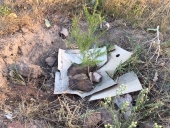




Be the change you wish to see in the world
 4
4




Home & LifeStyle Building Training. How to transition from the Rat Race to Freedom!
https://upvir.al/56817/lp56817
Also, Chechout My YouTube Channel
https://www.youtube.com/channel/UC-rd5G_2jWSV-sAi-xpdFZA
 2
2




It's never too late to start! I retired to homestead on the slopes of Mauna Loa, an active volcano. I relate snippets of my endeavor on my blog : www.kaufarmer.blogspot.com
 1
1




 1
1




John Duda wrote:Do you have a neighbor who has cattle, or maybe sheep that could be let into your fields? Trade some forage for the nitrogen improvement. Then till later. Is your place fenced?
Be the change you wish to see in the world





"Never doubt that a small group of thoughtful, committed citizens can change the world; indeed, it's the only thing that ever has."-Margaret Mead "The only thing worse than being blind, is having sight but no vision."-Helen Keller
 1
1




Sometimes the answer is nothing









wayne fajkus wrote:Plant the trees. I see no reason to wait, so long as its the proper time to plant.
If you do till, add 2 to 3 inches of manure and dont till again (,redhawk approved). Make sure you get something planted before rains erode your soil.
Tilling can create a bigger mess than what you started with. A new weed may come up in big numbers from all the disturbance . It may rain for the next week, etc.
I'm succesfull using a hay layer spread out lightly over the seeds i broadcast. It keeps the seed in place, keeps ground moist, adds organic matter and increases germination over just broadcasting.
Be the change you wish to see in the world










 1
1




This depends on the plant mix. You need good penetrating spike roots (dandelion/chicory/diakon/alfalfa...) to break up the compaction.With how compacted this soil is can I get away with not tilling and still have the cover crop take hold?
Your grassland is at a certain stage of evolutionary growth toward becoming a forest already. This is called succession. Open spaces want to become forests in your region, and so generally the longer term that the grassland has been in place, the more fungi are present toward it supporting healthy shrubs and trees, now or in the future. When you till, you knock the soil community, particularly the fungi, back to square one, or nearly so, or-in these terms-back to the first stage of succession. The first stage of succession is generally made up of annual and perennial weed species. In addition to all the new weeds, a lot of grasses will come back from the broken up roots after being tilled, even with many passes with the tiller.Tilling can create a bigger mess than what you started with. A new weed may come up in big numbers from all the disturbance. It may rain for the next week, etc.
"Never doubt that a small group of thoughtful, committed citizens can change the world; indeed, it's the only thing that ever has."-Margaret Mead "The only thing worse than being blind, is having sight but no vision."-Helen Keller




Chris Emerson wrote:
With how compacted this soil is can I get away with not tilling and still have the cover crop take hold? If I do as you say and broadcast then throw a light layer of straw to cover will that work? This sounds like a good option. When you do it, is it over bare soil or have you done it in something like my situation? Thanks
Sometimes the answer is nothing


 1
1








 2
2




Be the change you wish to see in the world

 2
2




List of Bryant RedHawk's Epic Soil Series Threads We love visitors, that's why we live in a secluded cabin deep in the woods. "Buzzard's Roost (Asnikiye Heca) Farm." Promoting permaculture to save our planet.




Zone 5/6
Annual rainfall: 40 inches / 1016 mm
Kansas City area discussion going on here: https://www.facebook.com/groups/1707573296152799/










It's never too late to start! I retired to homestead on the slopes of Mauna Loa, an active volcano. I relate snippets of my endeavor on my blog : www.kaufarmer.blogspot.com




Be the change you wish to see in the world




![Filename: 20180828_101447-640x480.jpg
Description: [Thumbnail for 20180828_101447-640x480.jpg]](/t/91977/a/64742/20180828_101447-640x480.jpg)
Sometimes the answer is nothing

 3
3




Be the change you wish to see in the world
















List of Bryant RedHawk's Epic Soil Series Threads We love visitors, that's why we live in a secluded cabin deep in the woods. "Buzzard's Roost (Asnikiye Heca) Farm." Promoting permaculture to save our planet.

|
I love a good mentalist. And so does this tiny ad:
Learn Permaculture through a little hard work
https://wheaton-labs.com/bootcamp
|







